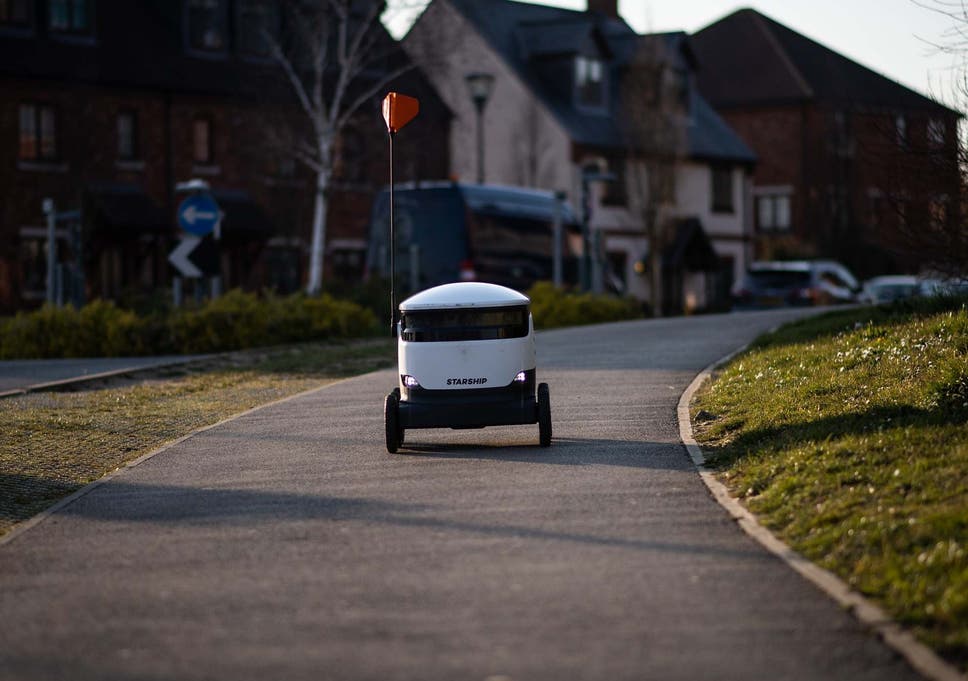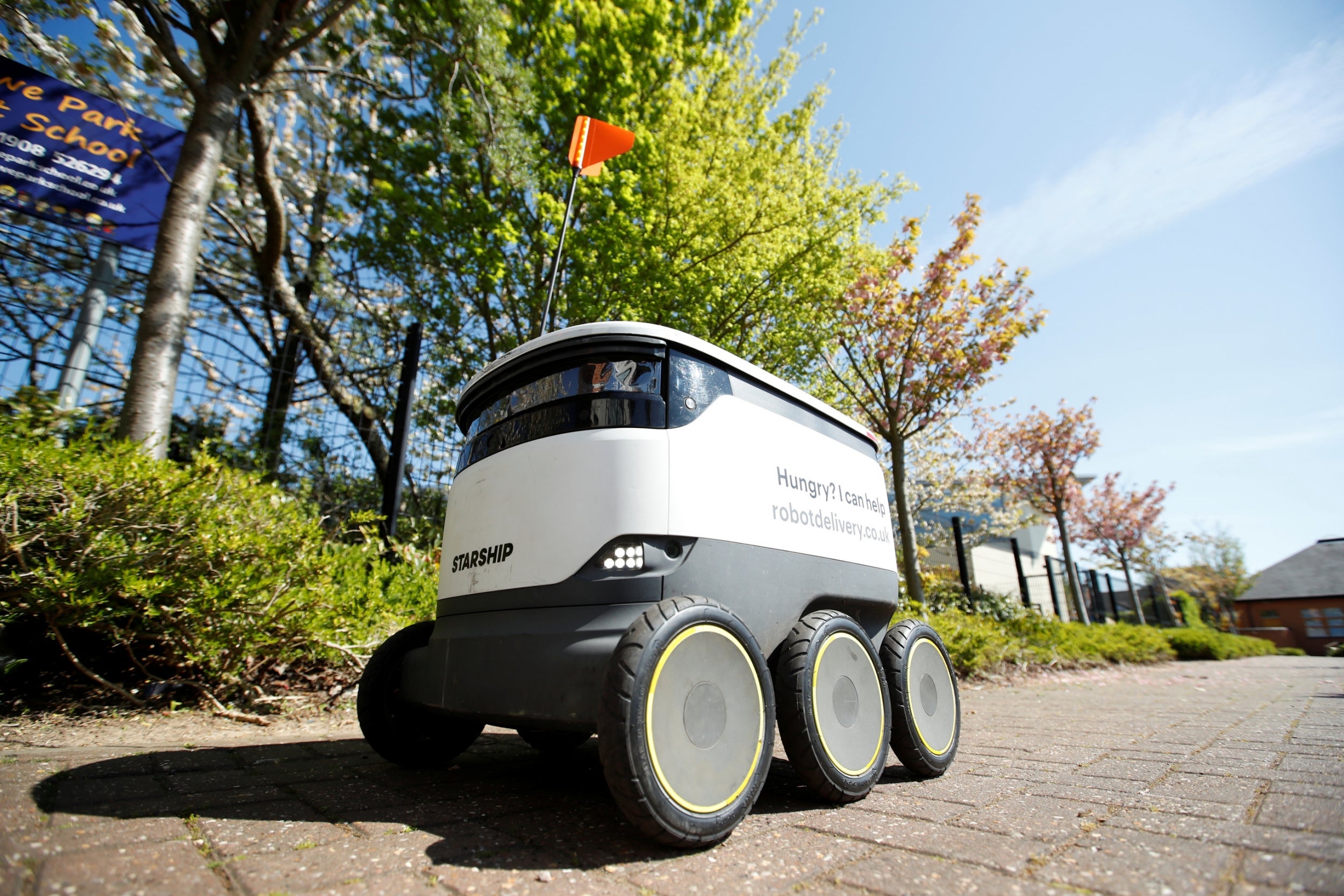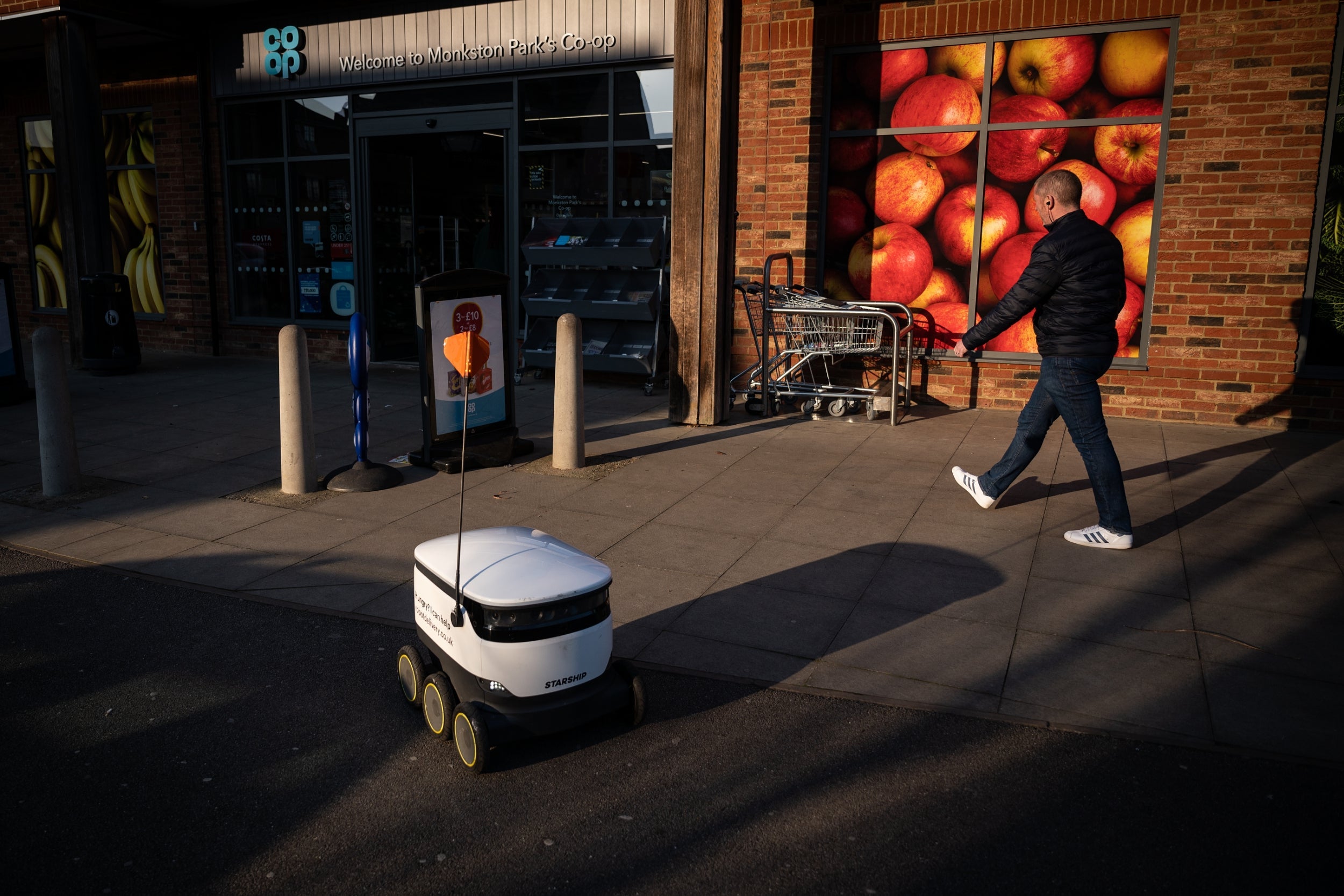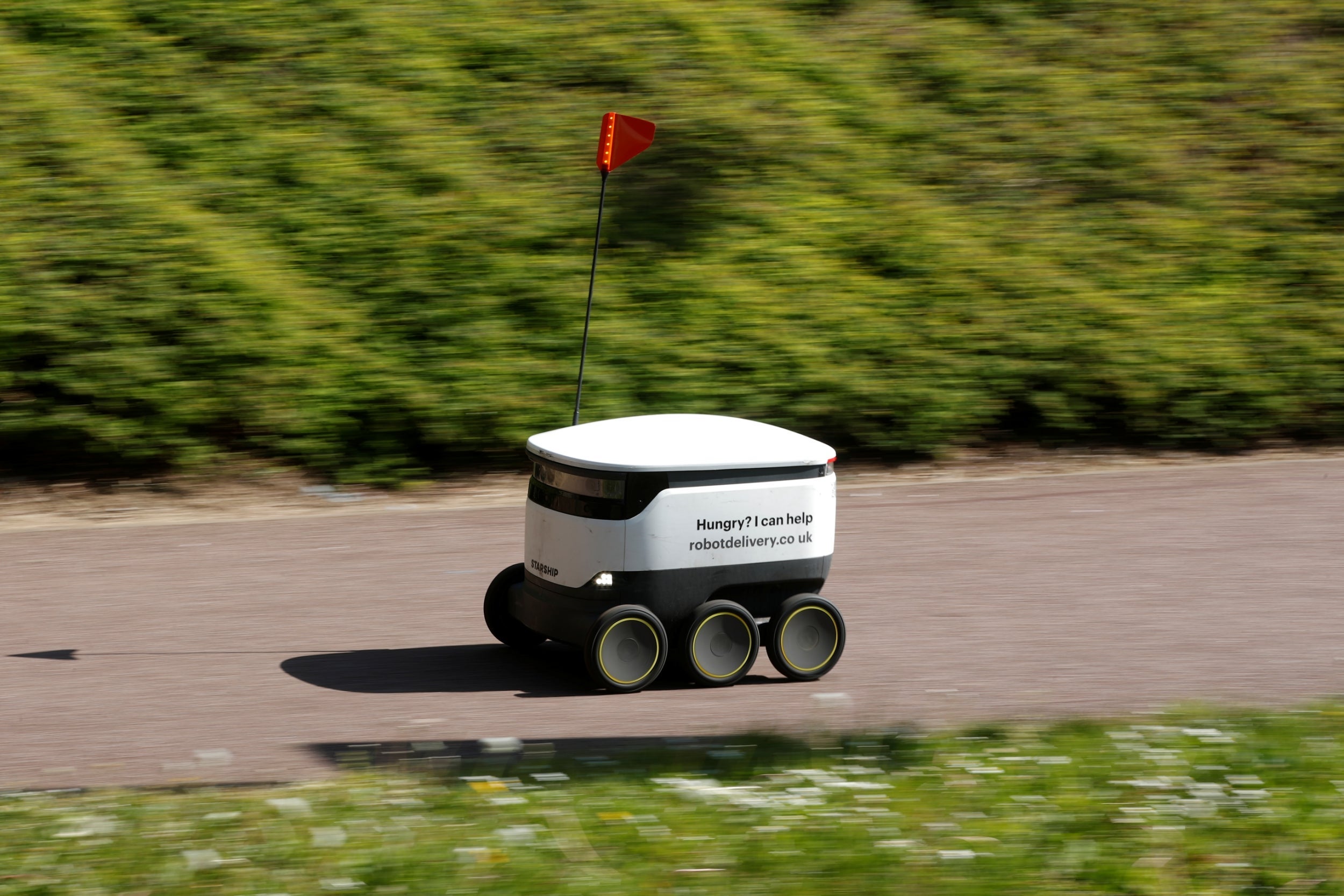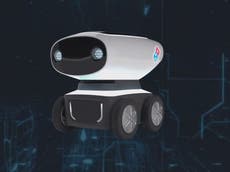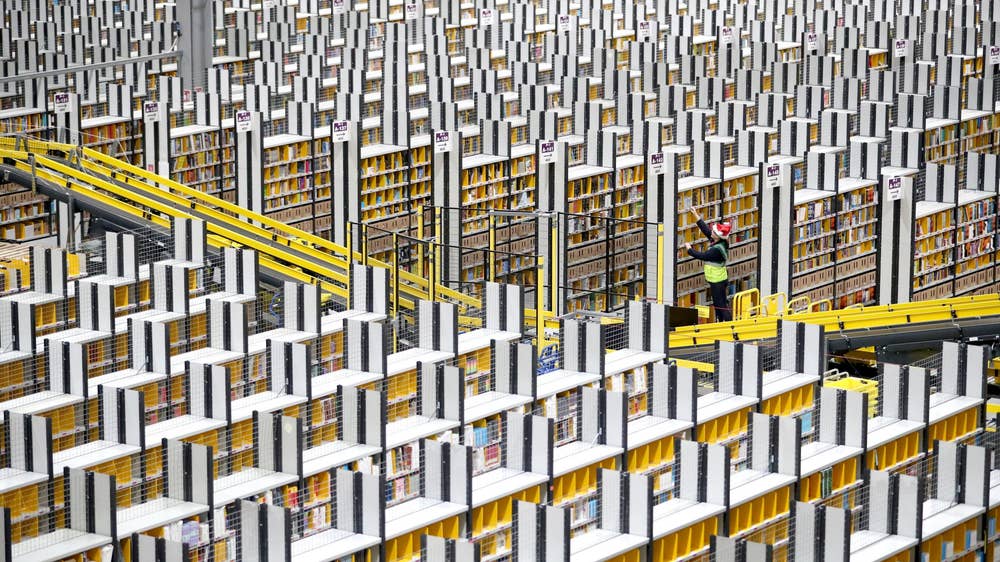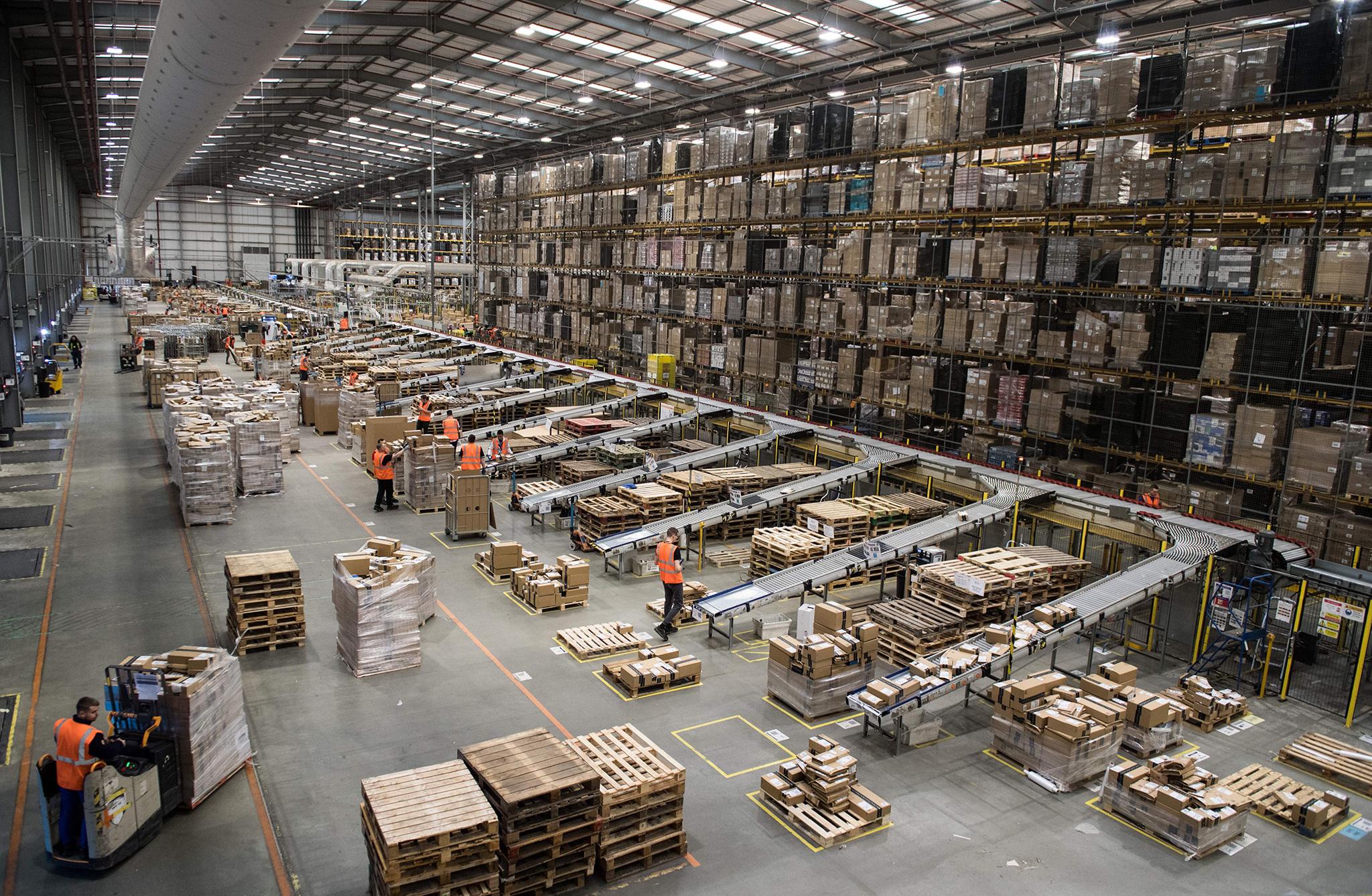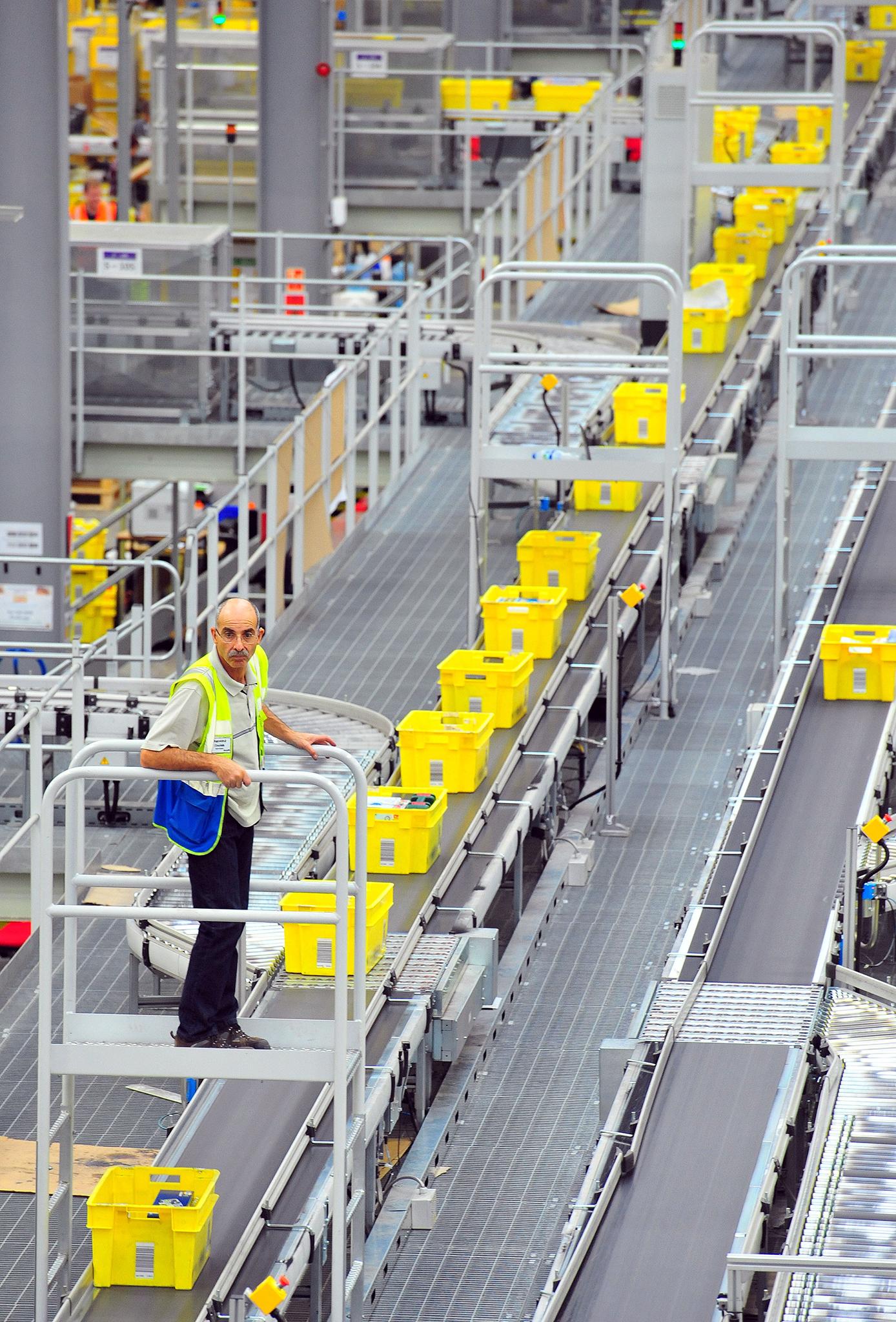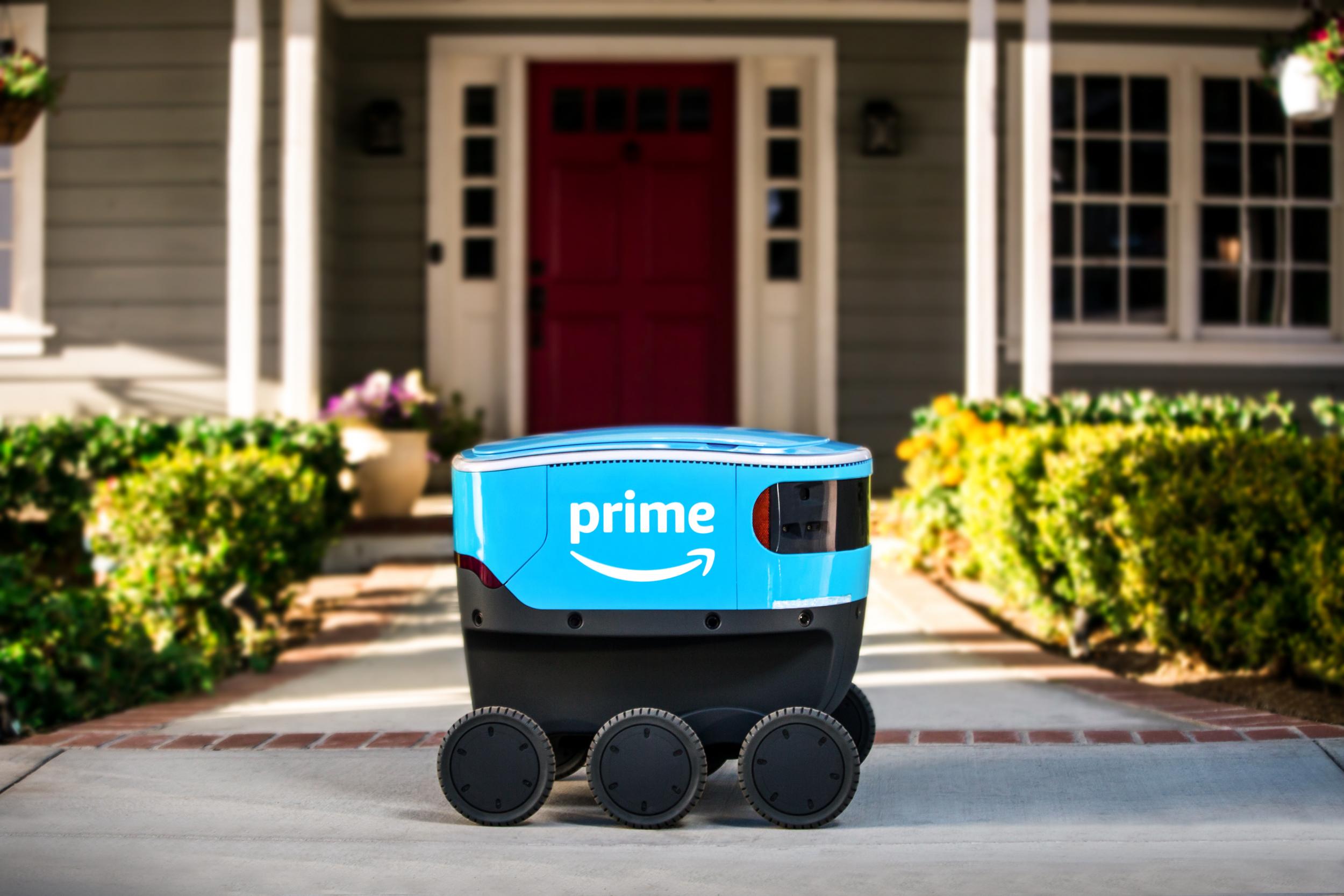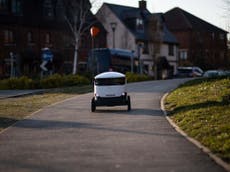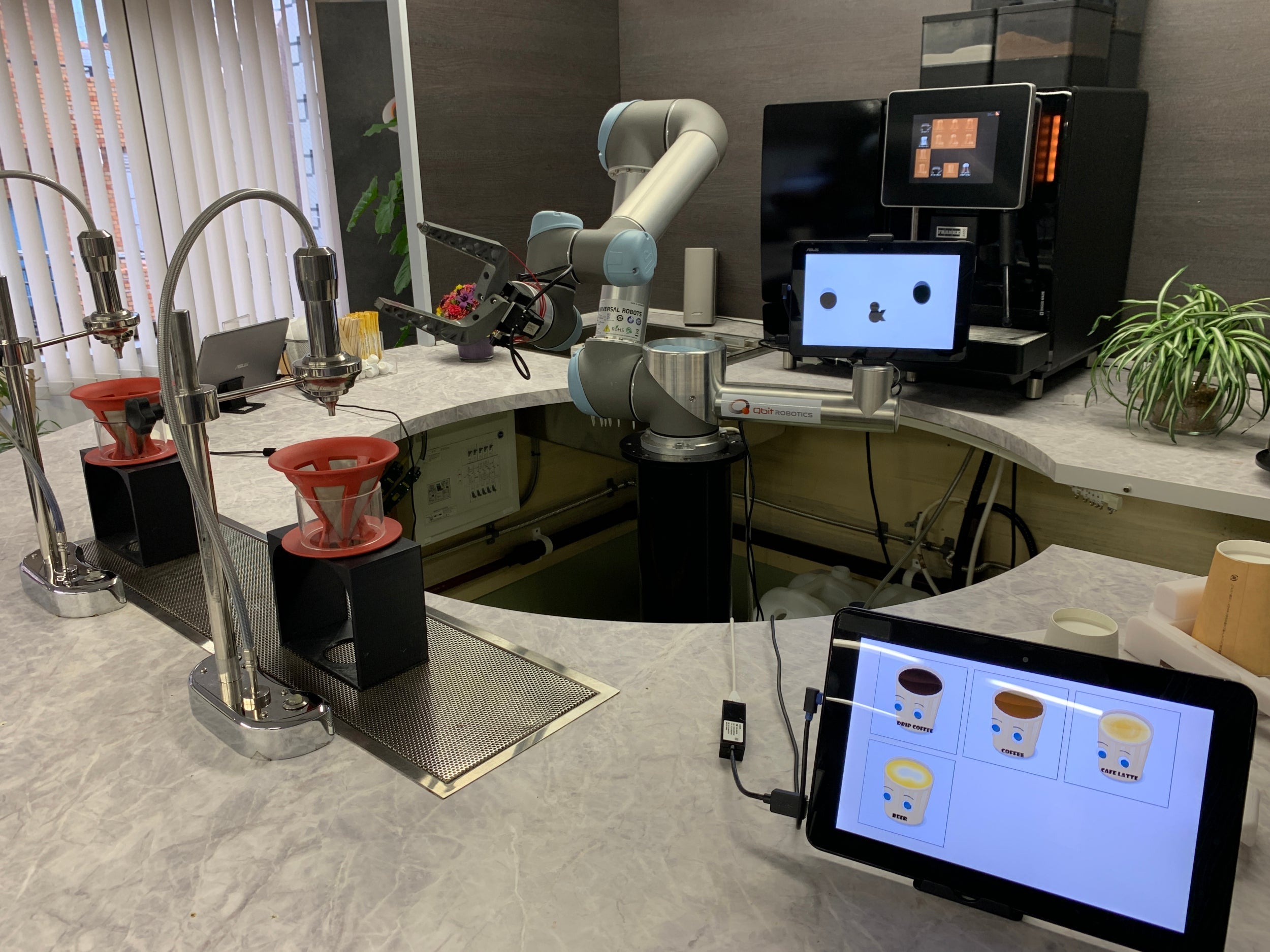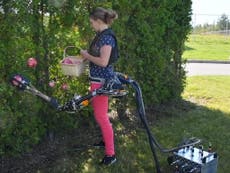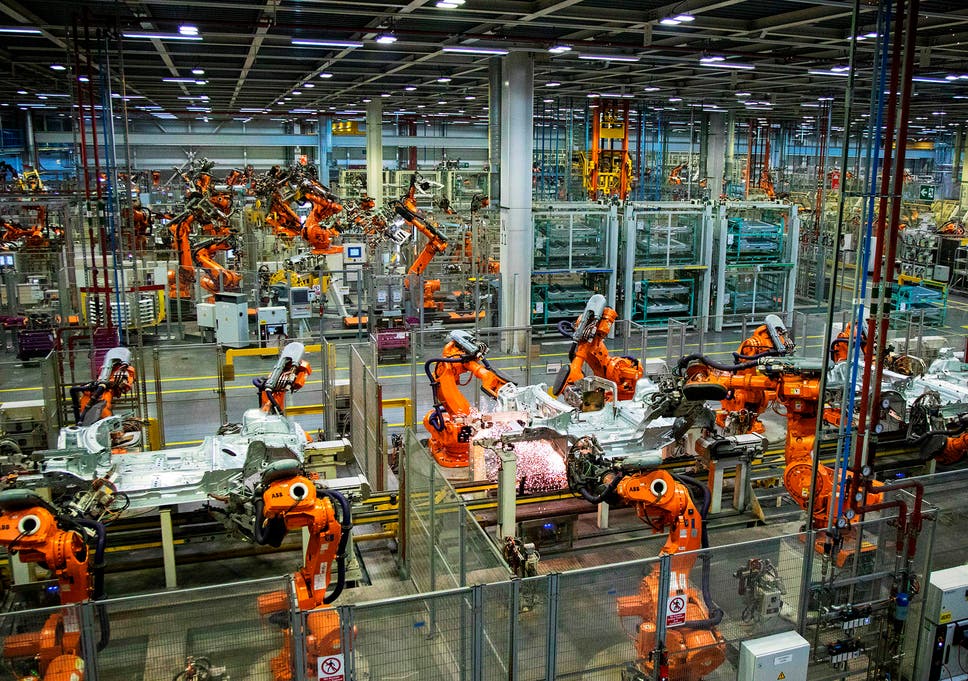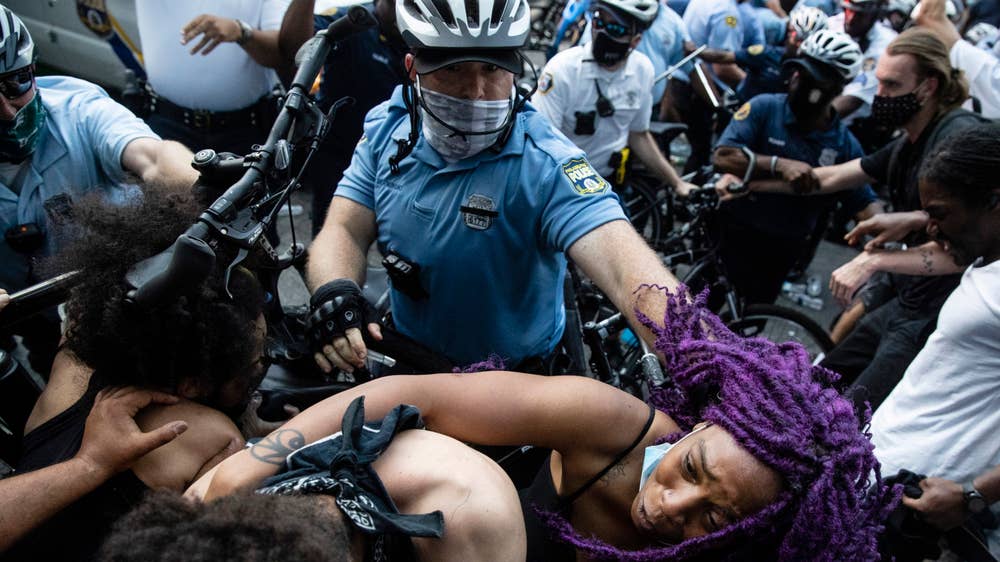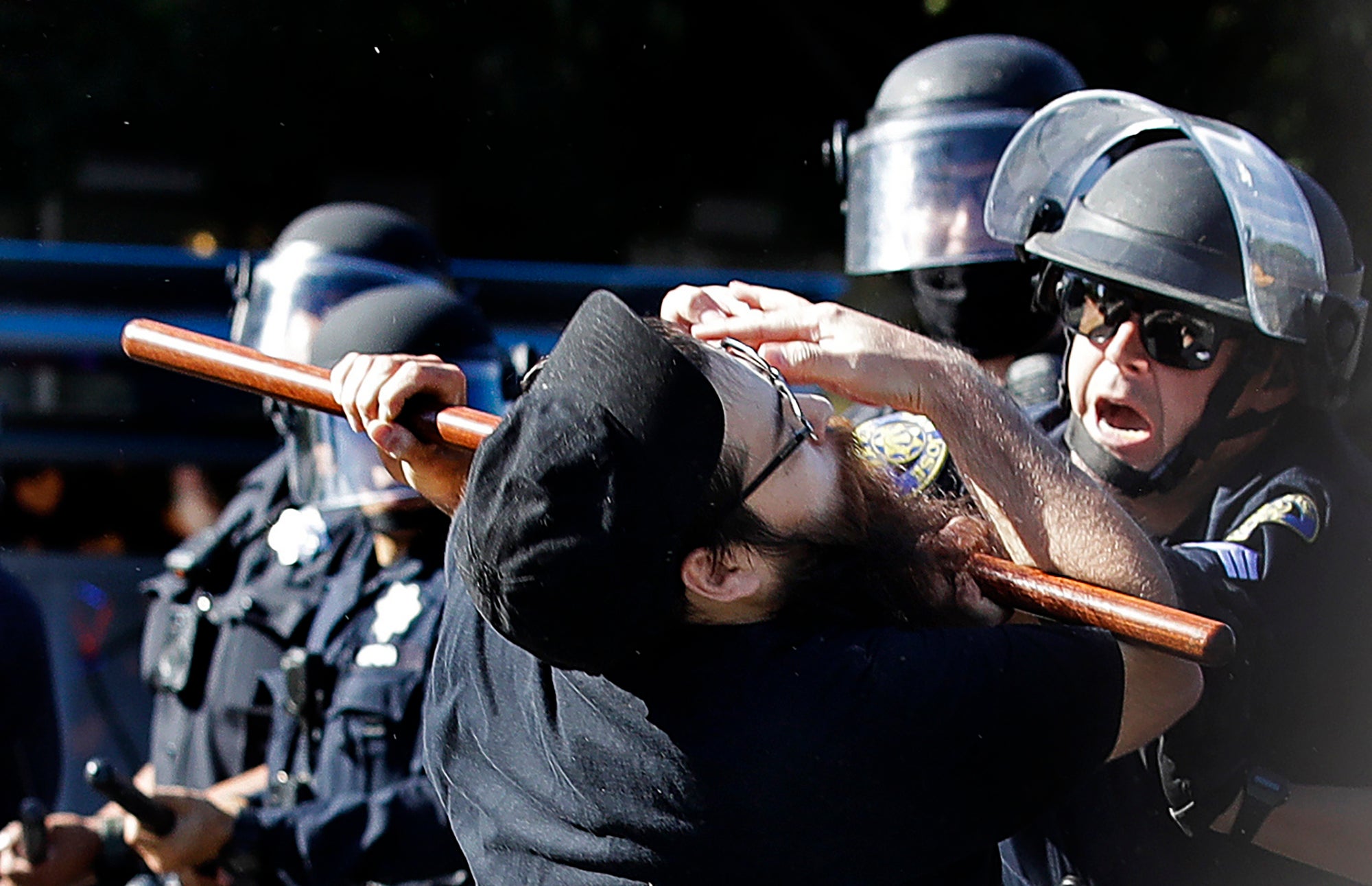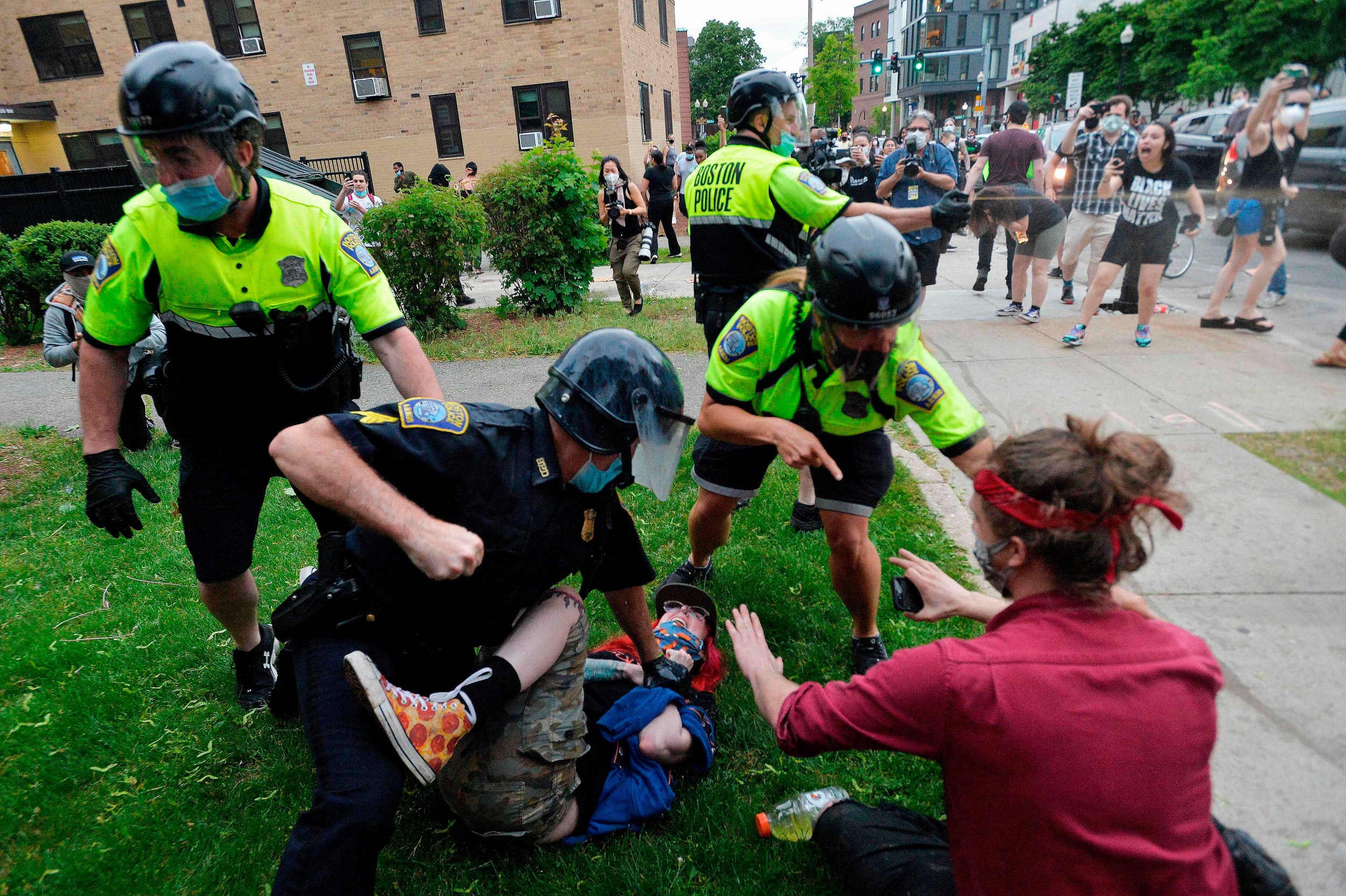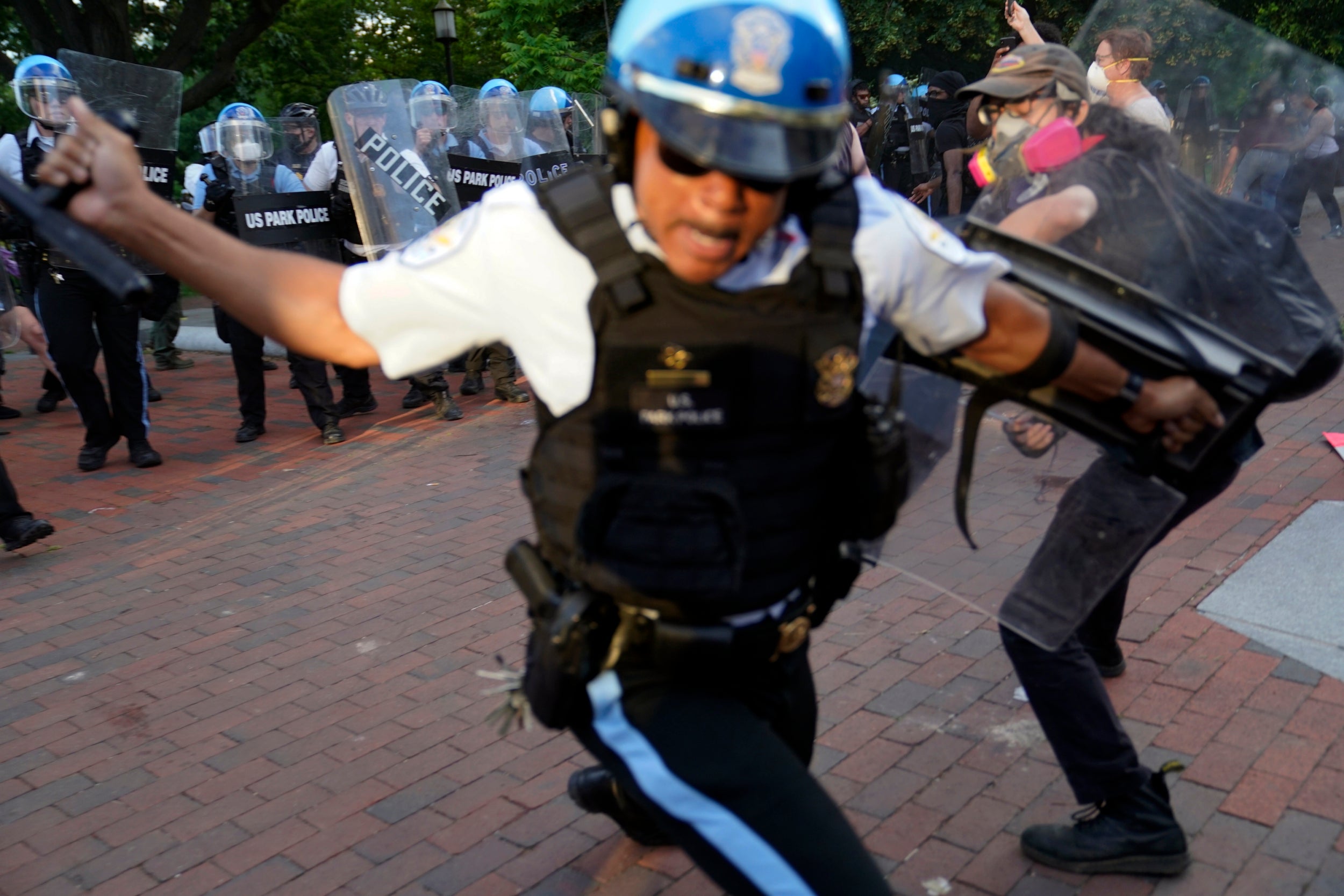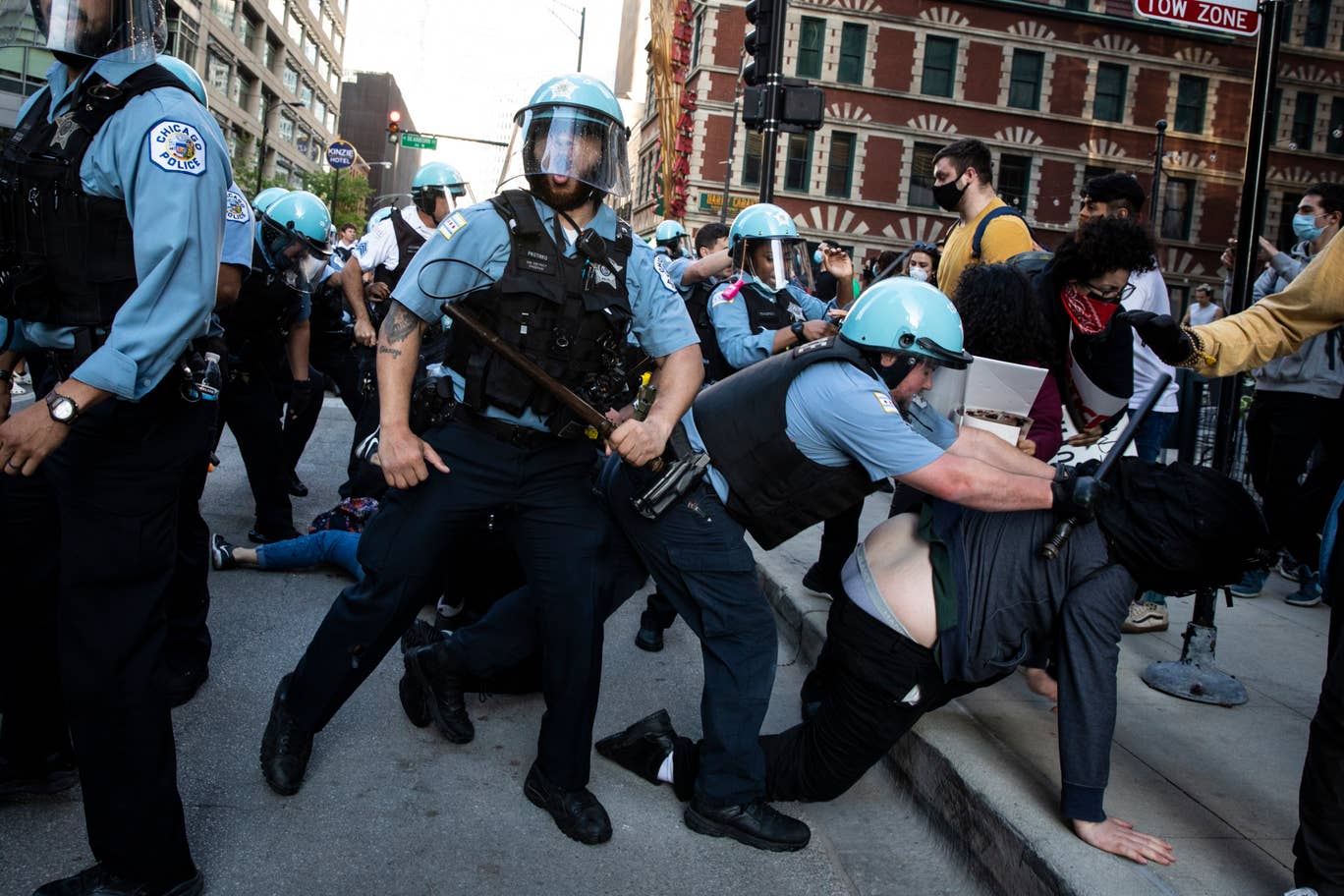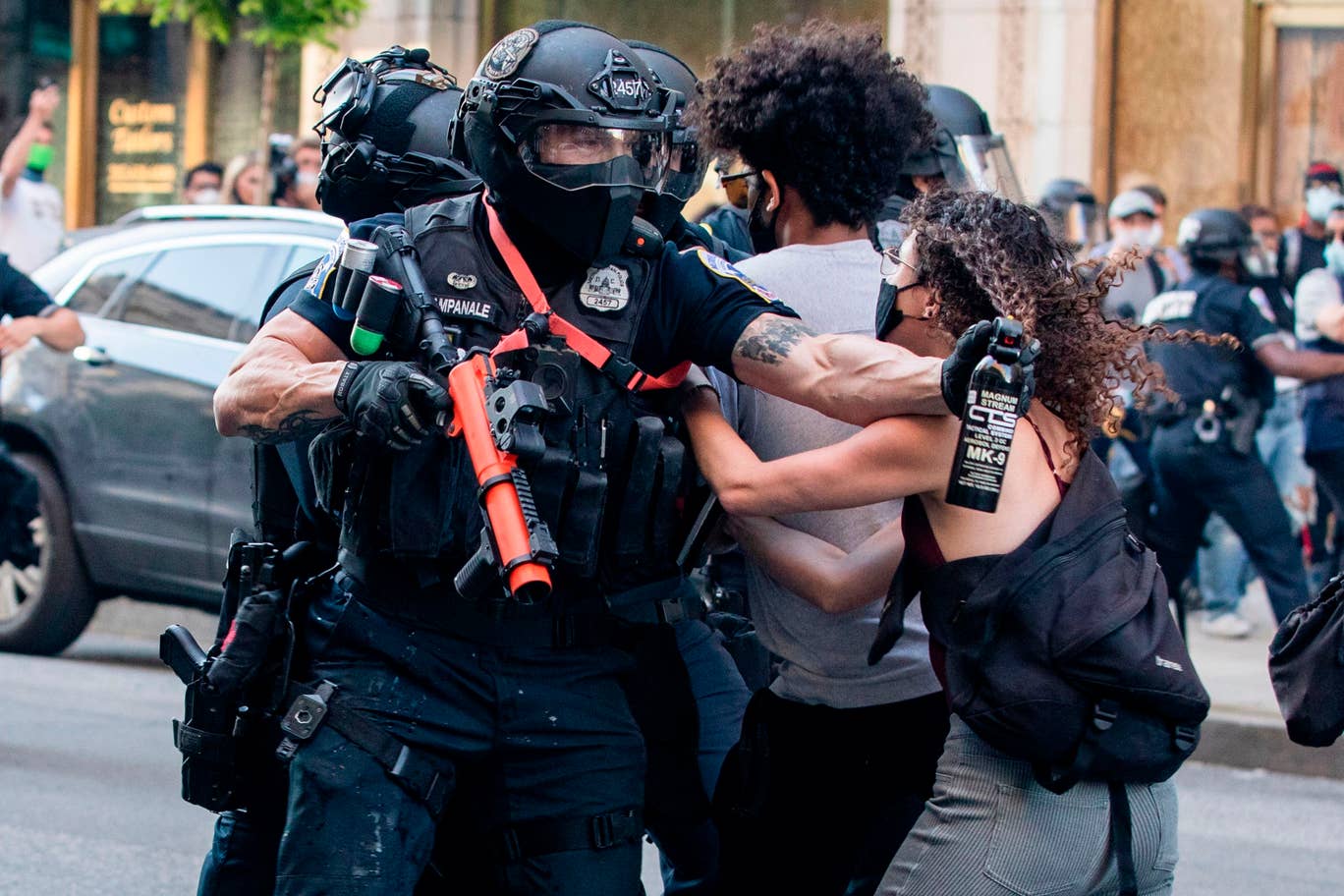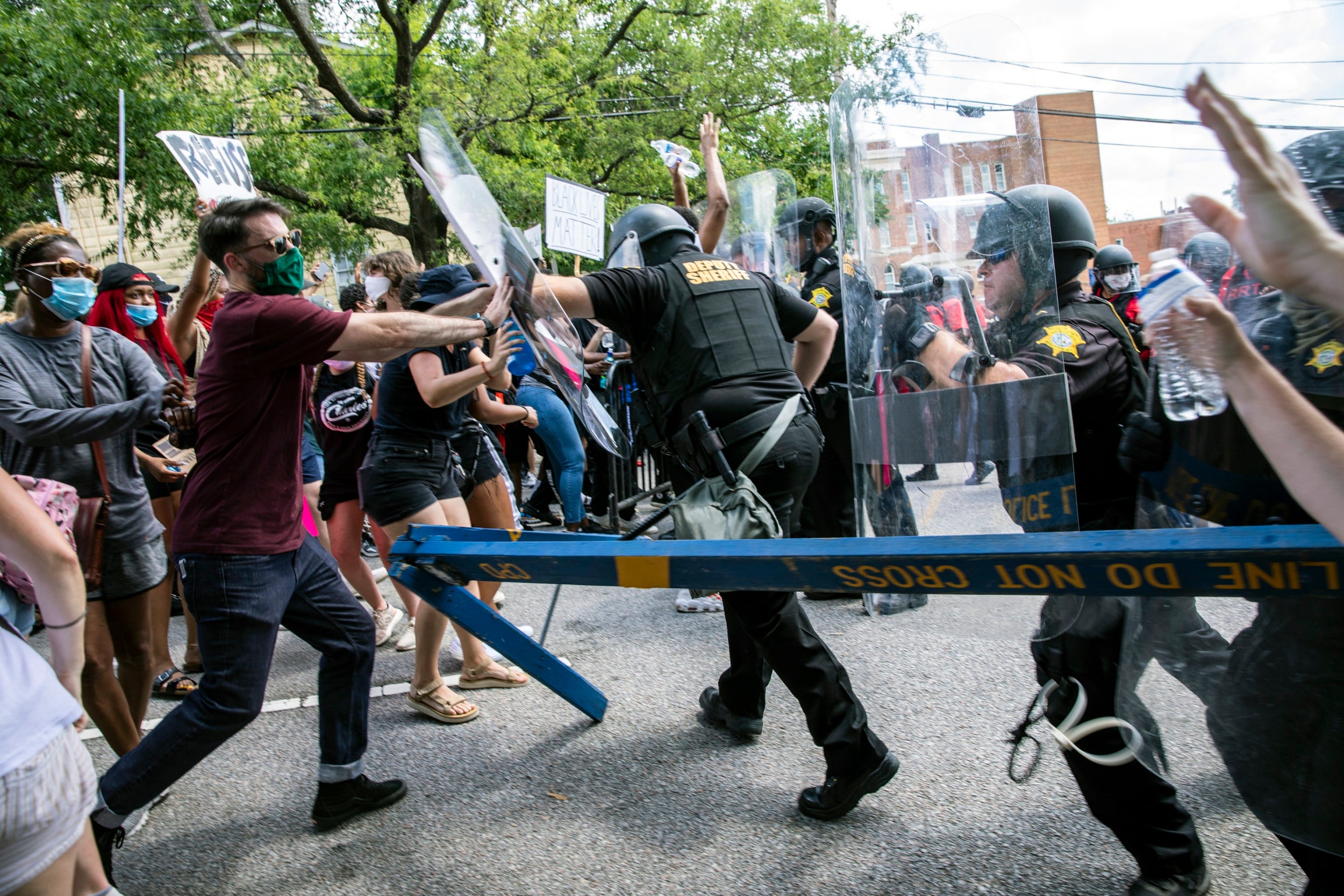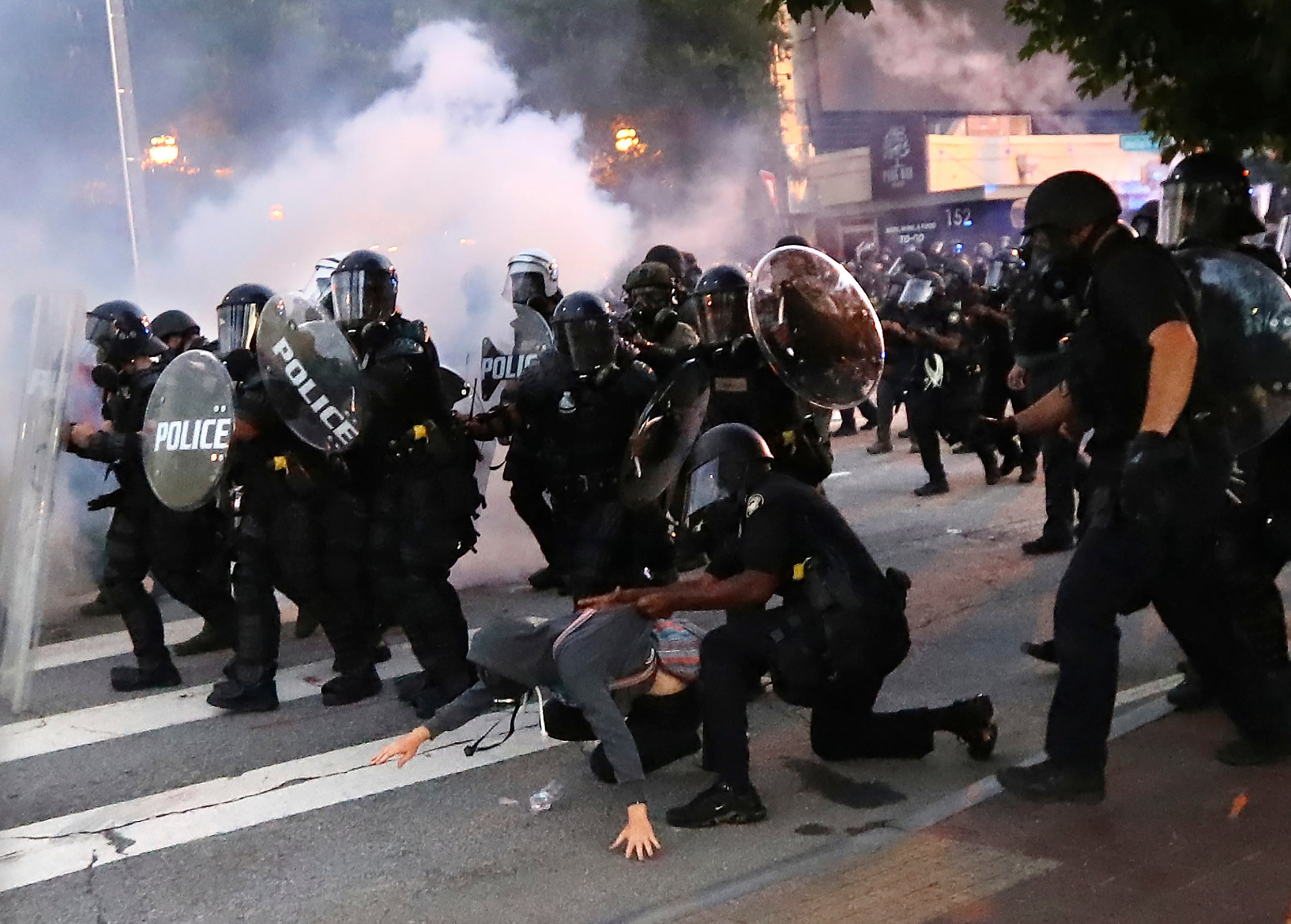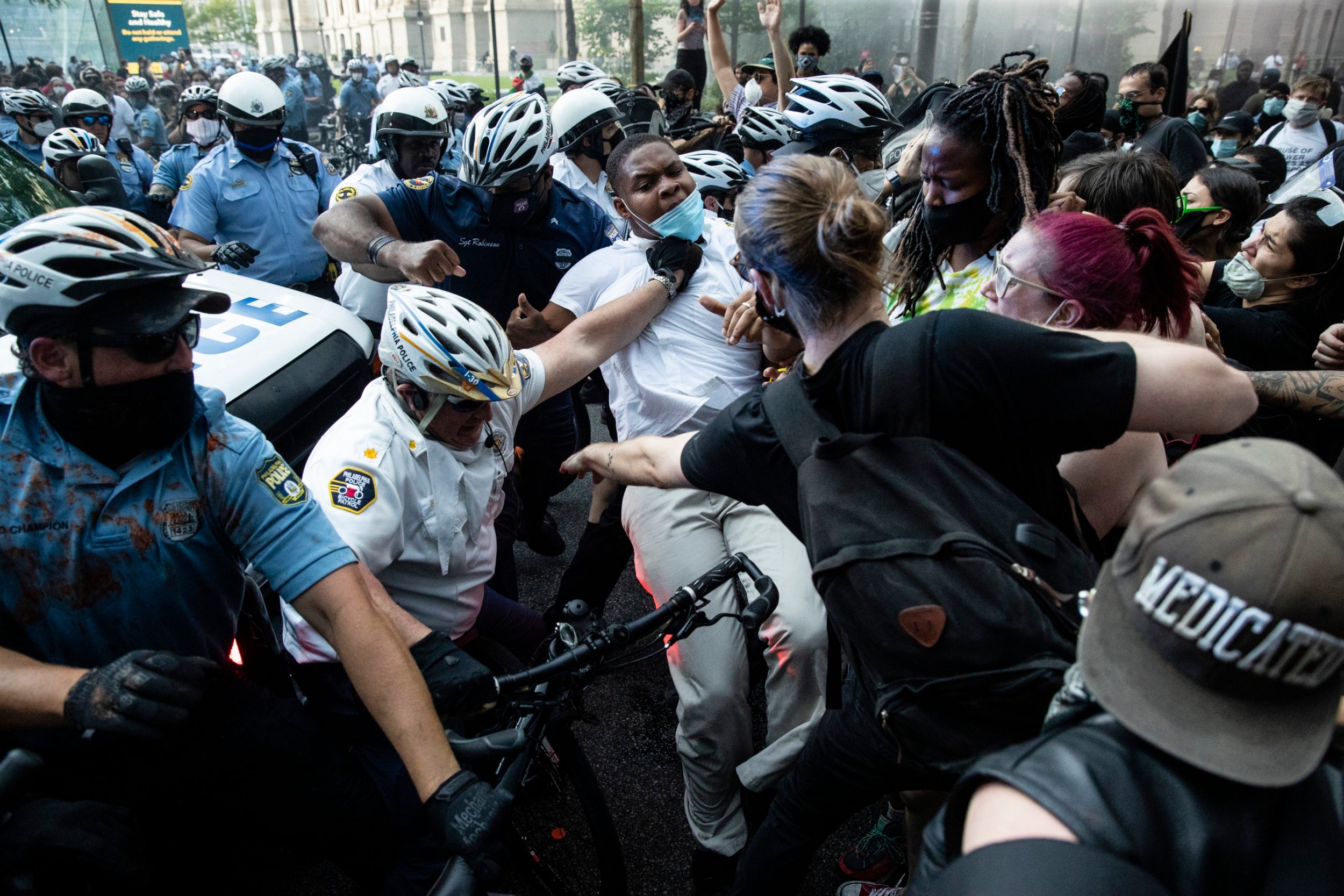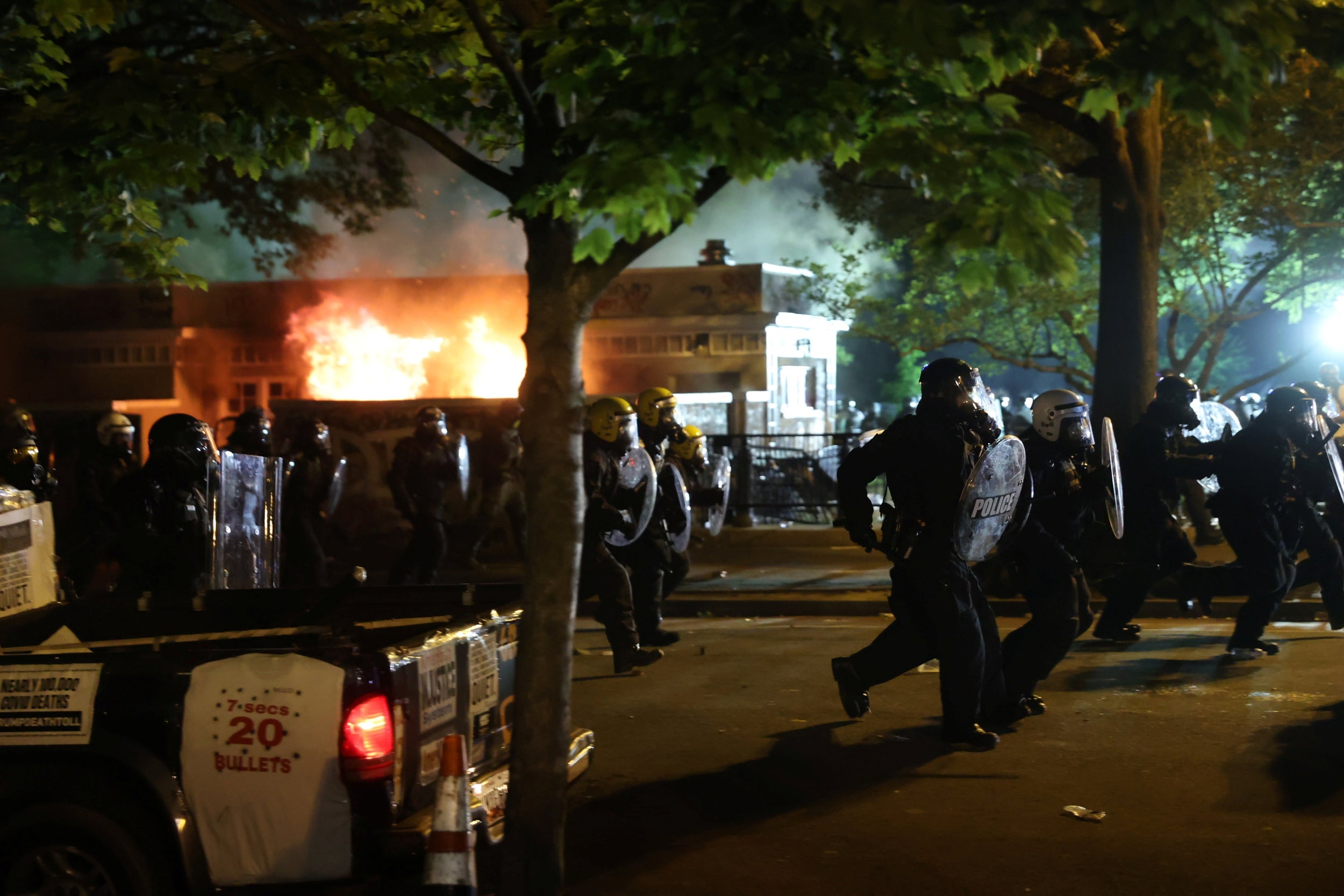Oregon to sue federal agencies over response to Portland protests
July 18 (UPI) -- Oregon Attorney General Ellen Rosenblum said Saturday that the state will sue federal law enforcement agencies over their response to Black Lives Matter protests in Portland.
Rosenblum announced in a Twitter post that the lawsuit would be filed specifically in response to federal officers allegedly seizing and detaining residents without probable cause and excessive force. The agencies named included U.S. Department of Homeland Security, U.S. Marshals Service, U.S. Marshals Service, U.S. Customs and Border Protection and the Federal Protection Service.
Nightly protests against police violence have attracted hundreds to sometimes thousands in Portland for more than six weeks in the aftermath of the police killing of George Floyd in Minneapolis on Memorial Day.
Since at least Tuesday, federal officers have been using unmarked vehicles to grab protesters off the streets and detain them with little explanation of why they are being arrested in an apparent escalation of federal force, witnesses told Oregon Public Broadcasting reported
"I share the concerns of our state and local leaders -- and our Oregon U.S. senators and certain congressional representatives -- that the current escalation of fear and violence in downtown Portland is being driven by federal law enforcement tactics that are entirely unnecessary and out of character with the Oregon way," Rosenblum said in a statement.
"These tactics must stop. They not only make it impossible for people to assert their First Amendment rights to protest peacefully. They also create a more volatile situation on our streets."
Last week police shot a Portland protester in the head with an impact munition causing serious injuries, OregonLive reported.
Rosenblum announced a state criminal investigation with the Multnomah County District Attorney into the injury. She blamed the incident on a federal police officer.
"The federal administration has chosen Portland to use their scare tactics to stop our residents from protesting police brutality and from supporting the Black Lives Matter movement. Every American should be repulsed when they see this happening. If this can happen in Portland, it can happen anywhere," Rosenblum said.
Tensions between the city of Portland and federal agencies heated up after Acting Secretary Chad Wolf of the Department of Homeland Security arrived downtown on Thursday afternoon, KOIN reported. Federal officers deployed tear gas outside the federal courthouse after protesters stood their ground late Thursday night when they were told to disperse. By the end of the night, 20 people were arrested.
CBP said it arrested "violent anarchists" over the past several weeks, accusing them of damaging and destroying federal property.
CBP Commissioner Mark Morgan tweeted that his agency "will continue to arrest the violent criminals that are destroying federal property and injuring our agents/officers in Portland."
"CBP will restore and maintain law and order."
Two separate marches were scheduled that night, one a "fight for Black Lives," by the PNW Youth Liberation Front against "the rise of fascism and hate in America," according to Radical Guide website. The other a "March for Black Education," which according to the PDX Black Lives Matter Events was to bring awareness to the lack of black representation in Portland Public Schools and the treatment of Black, Indigenous, and people of color students and faculty.
The total number of arrests since federal officers came to Portland has not been disclosed.
Last week federal officers arrested a protester for vandalizing a federal courthouse. According to a series of Portland police tweets, federal officers also arrested two other people for unlawfully pointing lasers into federal officers' eyes and another person for breaking a hole in the door of the federal courthouse with a hammer and striking one of the federal officers who responded to the scene in the head and shoulder with a hammer.
“Flat-Out Unconstitutional”: Federal Officers In Unmarked Vans Are Snatching People Off The Streets In Portland
“They're snatching people and asking questions later," said one resident.
Craig SilvermanBuzzFeed News Reporter
Last updated on July 17, 2020
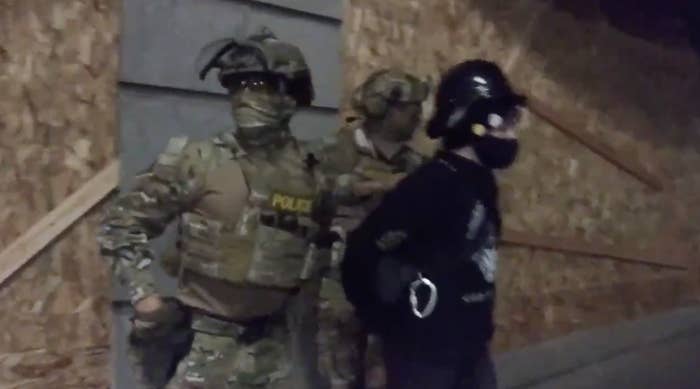
@KohzKah / Twitter / Via Twitter: @KohzKah
Protesters in Portland, Oregon, say federal officers deployed by President Donald Trump are increasing tensions and violating civil rights by roaming the streets in unmarked vans and detaining people without probable cause.
Videos and witness accounts detail how armed officers outfitted in camouflage and lacking identifying information on their uniforms are snatching people off the street. One viral video shared on July 15 shows two men in fatigues exiting an unmarked van, grabbing a person by their arms, and escorting them to a vehicle. The officers remained silent as bystanders asked who they were and what they were doing.

The Sparrow Project@sparrowmedia
Militarized Federal Agents from a patchwork of outside agencies have begun policing Portland (in rented minivans vans) without the explicit approval of the mayor, the state, or local municipalities. This is what that looks like in practice:04:22 PM - 15 Jul 2020
Reply Retweet Favorite
The identity of the person detained in that video is unknown, but Portland resident Mark Pettibone told Oregon Public Broadcasting he was detained on July 15 by a group of federal officers. He said they grabbed him off the street for no reason, placed him in an unmarked van, and used his hat to cover his eyes while he was transported to a federal courthouse.
“I just happened to be wearing black on a sidewalk in downtown Portland at the time,” Pettibone said. “And that apparently is grounds for detaining me.”
Juniper Simonis, a quantitative ecologist who volunteers as a medic at protests, told BuzzFeed News that federal officers forcibly took them into custody and separated them from their service dog for using chalk on the sidewalk in front of a federal building on July 10. Simonis said they were sprayed with OC gas, a form of pepper spray, at close range.
“They jumped me and assaulted me without any legal or verbal communication to me about being under arrest, or telling me to stop,” said Simonis, a trans woman who uses "they"/"them" pronouns. “They're snatching people and asking questions later.”
On Friday, the American Civil Liberties Union Foundation of Oregon sued the Department of Homeland Security and US Marshals Service in what it said was "one "many [lawsuits] the ACLU will be filing against federal authorities in Portland for their unconstitutional attacks on people protesting the police killing of George Floyd."
The ACLU added DHS and US Marshals Service to a lawsuit that had already been filed against local law enforcement agencies, where a federal judge had already issued an order blocking local officials from dispersing, arresting, or using force against reporters and legal observers until Oct. 30.
"What is happening in Portland is an unconstitutional nightmare," Vera Eidelman, staff attorney with the ACLU's Speech, Privacy and Technology Project said in a statement. "The ACLU will not let the government respond to protests against police brutality with still more brutality."
The ACLU's motion filed Friday looks to add the federal agencies to the judge's order.
Although the motion specifically mentions federal agents' actions against journalists and legal observers, and does not mention arrests of protesters, it is the first attempt to legally block federal agents' actions on the ground in Portland.
July 18 (UPI) -- Oregon Attorney General Ellen Rosenblum said Saturday that the state will sue federal law enforcement agencies over their response to Black Lives Matter protests in Portland.
Rosenblum announced in a Twitter post that the lawsuit would be filed specifically in response to federal officers allegedly seizing and detaining residents without probable cause and excessive force. The agencies named included U.S. Department of Homeland Security, U.S. Marshals Service, U.S. Marshals Service, U.S. Customs and Border Protection and the Federal Protection Service.
Nightly protests against police violence have attracted hundreds to sometimes thousands in Portland for more than six weeks in the aftermath of the police killing of George Floyd in Minneapolis on Memorial Day.
Since at least Tuesday, federal officers have been using unmarked vehicles to grab protesters off the streets and detain them with little explanation of why they are being arrested in an apparent escalation of federal force, witnesses told Oregon Public Broadcasting reported
"I share the concerns of our state and local leaders -- and our Oregon U.S. senators and certain congressional representatives -- that the current escalation of fear and violence in downtown Portland is being driven by federal law enforcement tactics that are entirely unnecessary and out of character with the Oregon way," Rosenblum said in a statement.
"These tactics must stop. They not only make it impossible for people to assert their First Amendment rights to protest peacefully. They also create a more volatile situation on our streets."
Last week police shot a Portland protester in the head with an impact munition causing serious injuries, OregonLive reported.
Rosenblum announced a state criminal investigation with the Multnomah County District Attorney into the injury. She blamed the incident on a federal police officer.
"The federal administration has chosen Portland to use their scare tactics to stop our residents from protesting police brutality and from supporting the Black Lives Matter movement. Every American should be repulsed when they see this happening. If this can happen in Portland, it can happen anywhere," Rosenblum said.
Tensions between the city of Portland and federal agencies heated up after Acting Secretary Chad Wolf of the Department of Homeland Security arrived downtown on Thursday afternoon, KOIN reported. Federal officers deployed tear gas outside the federal courthouse after protesters stood their ground late Thursday night when they were told to disperse. By the end of the night, 20 people were arrested.
CBP said it arrested "violent anarchists" over the past several weeks, accusing them of damaging and destroying federal property.
CBP Commissioner Mark Morgan tweeted that his agency "will continue to arrest the violent criminals that are destroying federal property and injuring our agents/officers in Portland."
"CBP will restore and maintain law and order."
Two separate marches were scheduled that night, one a "fight for Black Lives," by the PNW Youth Liberation Front against "the rise of fascism and hate in America," according to Radical Guide website. The other a "March for Black Education," which according to the PDX Black Lives Matter Events was to bring awareness to the lack of black representation in Portland Public Schools and the treatment of Black, Indigenous, and people of color students and faculty.
The total number of arrests since federal officers came to Portland has not been disclosed.
Last week federal officers arrested a protester for vandalizing a federal courthouse. According to a series of Portland police tweets, federal officers also arrested two other people for unlawfully pointing lasers into federal officers' eyes and another person for breaking a hole in the door of the federal courthouse with a hammer and striking one of the federal officers who responded to the scene in the head and shoulder with a hammer.
“Flat-Out Unconstitutional”: Federal Officers In Unmarked Vans Are Snatching People Off The Streets In Portland
“They're snatching people and asking questions later," said one resident.
Craig SilvermanBuzzFeed News Reporter
Last updated on July 17, 2020

@KohzKah / Twitter / Via Twitter: @KohzKah
Protesters in Portland, Oregon, say federal officers deployed by President Donald Trump are increasing tensions and violating civil rights by roaming the streets in unmarked vans and detaining people without probable cause.
Videos and witness accounts detail how armed officers outfitted in camouflage and lacking identifying information on their uniforms are snatching people off the street. One viral video shared on July 15 shows two men in fatigues exiting an unmarked van, grabbing a person by their arms, and escorting them to a vehicle. The officers remained silent as bystanders asked who they were and what they were doing.

The Sparrow Project@sparrowmedia
Militarized Federal Agents from a patchwork of outside agencies have begun policing Portland (in rented minivans vans) without the explicit approval of the mayor, the state, or local municipalities. This is what that looks like in practice:04:22 PM - 15 Jul 2020
Reply Retweet Favorite
The identity of the person detained in that video is unknown, but Portland resident Mark Pettibone told Oregon Public Broadcasting he was detained on July 15 by a group of federal officers. He said they grabbed him off the street for no reason, placed him in an unmarked van, and used his hat to cover his eyes while he was transported to a federal courthouse.
“I just happened to be wearing black on a sidewalk in downtown Portland at the time,” Pettibone said. “And that apparently is grounds for detaining me.”
Juniper Simonis, a quantitative ecologist who volunteers as a medic at protests, told BuzzFeed News that federal officers forcibly took them into custody and separated them from their service dog for using chalk on the sidewalk in front of a federal building on July 10. Simonis said they were sprayed with OC gas, a form of pepper spray, at close range.
“They jumped me and assaulted me without any legal or verbal communication to me about being under arrest, or telling me to stop,” said Simonis, a trans woman who uses "they"/"them" pronouns. “They're snatching people and asking questions later.”
On Friday, the American Civil Liberties Union Foundation of Oregon sued the Department of Homeland Security and US Marshals Service in what it said was "one "many [lawsuits] the ACLU will be filing against federal authorities in Portland for their unconstitutional attacks on people protesting the police killing of George Floyd."
The ACLU added DHS and US Marshals Service to a lawsuit that had already been filed against local law enforcement agencies, where a federal judge had already issued an order blocking local officials from dispersing, arresting, or using force against reporters and legal observers until Oct. 30.
"What is happening in Portland is an unconstitutional nightmare," Vera Eidelman, staff attorney with the ACLU's Speech, Privacy and Technology Project said in a statement. "The ACLU will not let the government respond to protests against police brutality with still more brutality."
The ACLU's motion filed Friday looks to add the federal agencies to the judge's order.
Although the motion specifically mentions federal agents' actions against journalists and legal observers, and does not mention arrests of protesters, it is the first attempt to legally block federal agents' actions on the ground in Portland.
Juniper Simonis is arrested.
A task force — including officers from the Department of Homeland Security, Customs and Border Protection, Immigration and Customs Enforcement, and the US Marshals Service — was deployed to Portland in early July after Trump issued an executive order about protecting national landmarks. But rather than remaining on federal property to protect statues and memorials, federal officers have at times engaged peaceful protesters and citizens with “less lethal” munitions and have been documented driving around and detaining people on city streets.
“Usually when we see people in unmarked cars forcibly grab someone off the street we call it kidnapping,” Jann Carson, interim executive director of the ACLU of Oregon, said in a statement. “The actions of the militarized federal officers are flat-out unconstitutional and will not go unanswered.”
Oregon Gov. Kate Brown called the deployment of federal officers a “blatant abuse of power.” The use of federal officers has also been condemned by the mayor of Portland, both of Oregon’s US senators, the Portland Police Bureau, and the local sheriff.
Sens. Ron Wyden and Jeff Merkley, along with two other members of Congress, sent a letter to acting DHS Secretary Chad Wolf and Attorney General Bill Barr requesting information about the deployment and a July 11 incident when a member of the US Marshals Service hit a peaceful protester in the head with an impact munition, fracturing his skull and requiring surgery.
“A peaceful protester in Portland was shot in the head by one of Donald Trump’s secret police,” Wyden tweeted. “Now Trump and Chad Wolf are weaponizing the DHS as their own occupying army to provoke violence on the streets of my hometown because they think it plays well with right-wing media.”
On Friday, the US attorney in Oregon called on the DHS's Office of the Inspector General to look into reports that protesters were detained without probable cause.
Wolf arrived in Portland this week amid the criticism.
“The city of Portland has been under siege for 47 straight days by a violent mob while local political leaders refuse to restore order to protect their city,” he said in a DHS news release on Thursday. “Each night, lawless anarchists destroy and desecrate property, including the federal courthouse, and attack the brave law enforcement officers protecting it.”
DHS released a list of 90 examples of what it called “lawless destruction and violence” in Portland dating back to May 29. Roughly a quarter of the incidents listed involved vandalism, graffiti, or trespassing. Eleven of the listed incidents resulted in arrests. Oregon Public Broadcasting reported that federal officials have so far charged 13 people related to the protests.
In response to criticism that federal officers in Portland are not identifying themselves, Mark Morgan, the acting commissioner of Customs and Border Protection, tweeted, “You will not see names on their uniforms b/c these same violent criminals use this information to target them & their families, putting both at risk.” Law enforcement officers are generally not required by law to identify themselves, according to Lawfare.
Benjamin Haas, the advocacy counsel at Human Rights First and a former Army intelligence officer, told BuzzFeed News the deployment of militarized federal officers in a US city is alarming.
“These law enforcement officers look more like the special operations forces I supported as an Army intelligence officer in Afghanistan than civilian police who are supposed to serve and protect American communities,” Haas said.
He added that the federal officers in Portland are “blurring the line between the military and law enforcement, [which] is unhealthy for democracy and American communities.”
After being grabbed off the street and brought to a federal courthouse, Pettibone said he was released without charges after he kept asking for a lawyer. DHS has not commented publicly on Pettibone’s arrest.
Simonis said they were also brought to the Portland federal courthouse after being arrested in front of the Edith Green–Wendell Wyatt Federal Building. After Simonis said they were detained for roughly eight hours and denied a phone call or access to a lawyer, they were released and issued two federal tickets for petty offenses.
DHS did not immediately respond to a request for comment on the arrest of Simonis.
Simonis said it’s possible other people are being detained and kept for longer periods without the ability to contact a lawyer.
“We know that there are people getting snatched off the streets, but we only know the stories of the people who have made it out,” they said.

Craig Silverman is a media editor for BuzzFeed News and is based in Toronto.
A task force — including officers from the Department of Homeland Security, Customs and Border Protection, Immigration and Customs Enforcement, and the US Marshals Service — was deployed to Portland in early July after Trump issued an executive order about protecting national landmarks. But rather than remaining on federal property to protect statues and memorials, federal officers have at times engaged peaceful protesters and citizens with “less lethal” munitions and have been documented driving around and detaining people on city streets.
“Usually when we see people in unmarked cars forcibly grab someone off the street we call it kidnapping,” Jann Carson, interim executive director of the ACLU of Oregon, said in a statement. “The actions of the militarized federal officers are flat-out unconstitutional and will not go unanswered.”
Oregon Gov. Kate Brown called the deployment of federal officers a “blatant abuse of power.” The use of federal officers has also been condemned by the mayor of Portland, both of Oregon’s US senators, the Portland Police Bureau, and the local sheriff.
Sens. Ron Wyden and Jeff Merkley, along with two other members of Congress, sent a letter to acting DHS Secretary Chad Wolf and Attorney General Bill Barr requesting information about the deployment and a July 11 incident when a member of the US Marshals Service hit a peaceful protester in the head with an impact munition, fracturing his skull and requiring surgery.
“A peaceful protester in Portland was shot in the head by one of Donald Trump’s secret police,” Wyden tweeted. “Now Trump and Chad Wolf are weaponizing the DHS as their own occupying army to provoke violence on the streets of my hometown because they think it plays well with right-wing media.”
On Friday, the US attorney in Oregon called on the DHS's Office of the Inspector General to look into reports that protesters were detained without probable cause.
Wolf arrived in Portland this week amid the criticism.
“The city of Portland has been under siege for 47 straight days by a violent mob while local political leaders refuse to restore order to protect their city,” he said in a DHS news release on Thursday. “Each night, lawless anarchists destroy and desecrate property, including the federal courthouse, and attack the brave law enforcement officers protecting it.”
DHS released a list of 90 examples of what it called “lawless destruction and violence” in Portland dating back to May 29. Roughly a quarter of the incidents listed involved vandalism, graffiti, or trespassing. Eleven of the listed incidents resulted in arrests. Oregon Public Broadcasting reported that federal officials have so far charged 13 people related to the protests.
In response to criticism that federal officers in Portland are not identifying themselves, Mark Morgan, the acting commissioner of Customs and Border Protection, tweeted, “You will not see names on their uniforms b/c these same violent criminals use this information to target them & their families, putting both at risk.” Law enforcement officers are generally not required by law to identify themselves, according to Lawfare.
Benjamin Haas, the advocacy counsel at Human Rights First and a former Army intelligence officer, told BuzzFeed News the deployment of militarized federal officers in a US city is alarming.
“These law enforcement officers look more like the special operations forces I supported as an Army intelligence officer in Afghanistan than civilian police who are supposed to serve and protect American communities,” Haas said.
He added that the federal officers in Portland are “blurring the line between the military and law enforcement, [which] is unhealthy for democracy and American communities.”
After being grabbed off the street and brought to a federal courthouse, Pettibone said he was released without charges after he kept asking for a lawyer. DHS has not commented publicly on Pettibone’s arrest.
Simonis said they were also brought to the Portland federal courthouse after being arrested in front of the Edith Green–Wendell Wyatt Federal Building. After Simonis said they were detained for roughly eight hours and denied a phone call or access to a lawyer, they were released and issued two federal tickets for petty offenses.
DHS did not immediately respond to a request for comment on the arrest of Simonis.
Simonis said it’s possible other people are being detained and kept for longer periods without the ability to contact a lawyer.
“We know that there are people getting snatched off the streets, but we only know the stories of the people who have made it out,” they said.

Craig Silverman is a media editor for BuzzFeed News and is based in Toronto.







